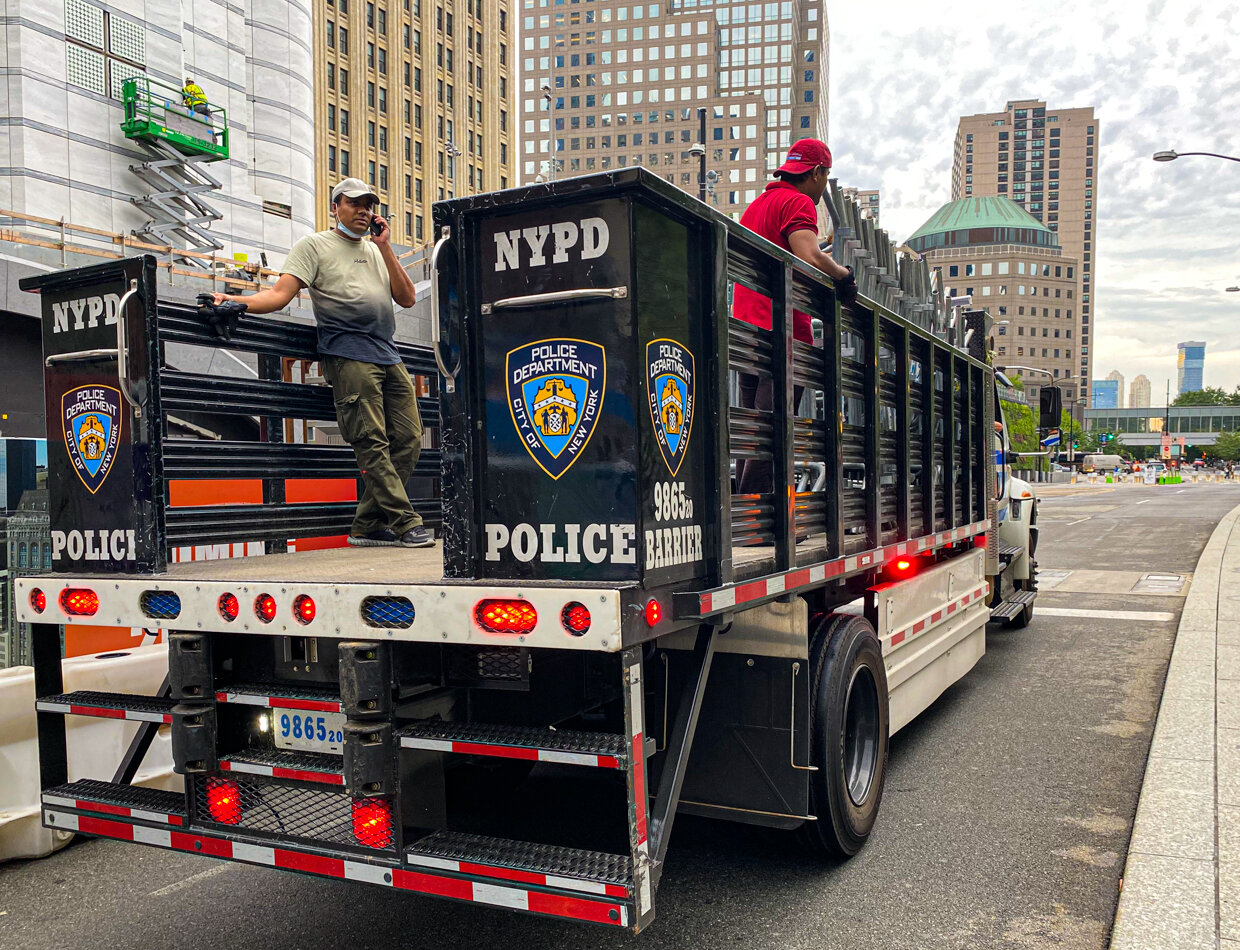A Sanctuary of Remembrance: How Security at the 9/11 Memorial Preserves This Sacred Site
| Photo by Brittany Bhulai
The opinions reflected in this OpEd are those of the author and do not necessarily reflect the opinions of staff, faculty and students of The King's College.
Deep in the heart of downtown Manhattan is a somber oasis of quiet reflection. Two waterfall-lined pools of concrete and stone rest side by side in a silent tribute to the 3,000 lives lost on 9/11. The edges of the foundations, graced with the occasional American flag or white rose, bear the names of every soul lost to that fateful day.
The 9/11 Memorial and Museum is one of the most high-security locations in New York City with three different police departments surrounding the grounds on an average day with a protective rim of blue uniforms. A team of security guards and memorial staff dot the grounds as well, offering additional boots on the ground and eyes on the crowd.
This concentration of highly-trained professionals is stationed to do one thing — protect and preserve the sacredness of Ground Zero. The constant presence of protective personnel delivers a clear message to any potential threat: do not even think about trying to hurt us here again.
To the average visitor who means no harm to the site, the presence of security personnel creates a space of safety — you can stop and pay your respects without fear of another attack.
“It is necessary to have [the memorial] secured,” Dr. Robert Carle, professor of theology for The King’s College, stated in an interview. “It would definitely be a high priority target for some unscrupulous people… I know that New York has the best anti-terrorism task force in the country, so I would trust that they know what they’re doing.”
This offering of a safe environment in which to peacefully reflect does come with some restrictions to public access, but the benefits of securing the 9/11 Memorial for current and future generations outweigh the inconvenience of operational closures.
Today, the memorial plaza is closed for a family-exclusive commemoration ceremony and Greenwich Street is closed for a private event, both until 3 p.m. After that time, the memorial will be open to the public until midnight. On all other days, operational hours are 10 a.m. to 5 p.m.
Because it is not open 24/7, most of the police officers working on the memorial grounds can be deployed to other parts of the city where they are needed more since crowds at the memorial are non-existent after hours. The plaza is of course monitored at all times, but there isn’t as much of a strain on the city’s resources or the personnel deployed if their shifts are timed within business hours by limiting police-monitored public access.
Dr. Carle also stated that “there’s always a kind of tension between access and security… but I don’t know what the alternative would be.”
In a post-9/11 world, there isn’t much of a choice. Either we have strong security, and the inconveniences that come with it, or we risk exposure of the memorial and its visitors to sinister threats lingering in the darkness beyond.
The sacred nature of this plaza is felt by all who step upon its grounds: from the briefcase toting businessman slowing his stride in a gesture of silent respect, to the tourist in an “I<3NY” t-shirt admiring the pools, to the King’s student pausing to pay their respects before heading off to their next Target run.
When I walk along Greenwich Street and see our men and women in blue next to the 9/11 Memorial, I feel safe. I feel protected. I know that I can stand unafraid at the foundations of the Twin Towers, lifting my eyes in a silent prayer for the families of the people we lost. We must be diligent to protect the sacred site commemorating that fateful day so it can faithfully be preserved as a testament to the American spirit for generations to come.






